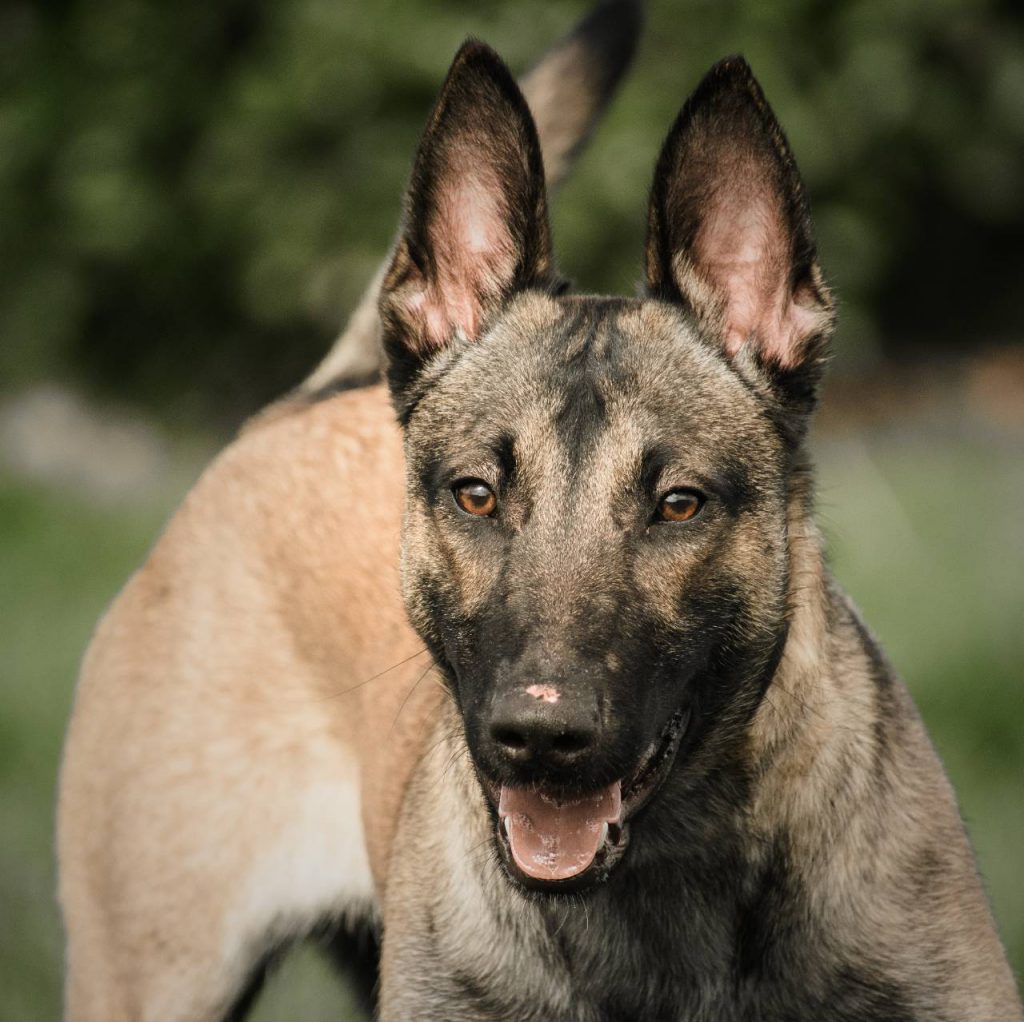Belgian Malinois are increasingly used as police dogs now because of their exceptional intelligence, trainability, agility, and bite strength. They are athletic, possess a strong work ethic, and can handle diverse tasks, making them a valuable asset to law enforcement. This article delves into the reasons behind the Belgian Malinois police dog popularity and compares them to other breeds traditionally used in police work.

Image Source: k10workingdogs.com
The Rising Star: Exploring Belgian Malinois Police Dog Popularity
For decades, the German Shepherd reigned supreme as the police dog of choice. However, the Belgian Malinois police dog popularity has surged in recent years. Several factors contribute to this shift, including their unique physical and mental attributes that align exceptionally well with the demands of modern police work. Their drive, stamina, and relatively smaller size are just a few reasons they are gaining favor.
Malinois vs German Shepherd Police: A Breed Comparison
The debate between Malinois vs German Shepherd police dogs continues. While both breeds are highly capable, certain key differences make the Malinois a more suitable choice for some agencies:
| Feature | German Shepherd | Belgian Malinois |
|---|---|---|
| Size | Larger, heavier | Smaller, lighter |
| Energy Levels | High | Extremely High |
| Trainability | High | Extremely High |
| Aggression | Can be prone to fear biting | Naturally confident |
| Stamina | Good | Excellent |
| Common Issues | Hip and elbow dysplasia | Generally healthier |
German Shepherds are known for their loyalty and protective nature. They can be more prone to fear biting. The Belgian Malinois temperament police dog is typically one of confidence and extreme work ethic, making them less likely to react out of fear and more capable of sustained high-intensity activity. Also, the advantages of Malinois police are that these dogs are more resilient to hip and elbow issues.
Unveiling Belgian Malinois Traits for Police Work
Several Belgian Malinois traits for police work make them exceptionally well-suited for law enforcement.
-
Intelligence and Trainability: Malinois are incredibly smart and eager to please, making them highly trainable. They quickly learn complex commands and adapt to various situations. Their sharp minds allow them to problem-solve independently, which is crucial in dynamic police scenarios. The Belgian Malinois trainability police find valuable is not only about learning commands but also about adapting to changing circumstances.
-
Agility and Speed: These dogs are exceptionally agile and fast. They can navigate obstacles, jump fences, and pursue suspects with remarkable speed. Their light build contributes to their maneuverability in tight spaces, an advantage in urban environments. Belgian Malinois agility police dogs can weave through obstacles and rapidly change direction during pursuit.
-
Stamina and Endurance: Malinois possess incredible stamina and can work for extended periods without tiring. This is essential for tasks like tracking, searching, and patrolling. Their high energy levels and relentless drive enable them to maintain focus even in challenging conditions.
-
Bite Strength: The Belgian Malinois bite force police dog utilizes is significant. While bite force isn’t the only factor determining a dog’s effectiveness, the Malinois has a powerful bite that can deter suspects and provide a crucial advantage in apprehension scenarios. Their bites are precise and controlled, minimizing the risk of unnecessary injury.
-
Protective Instincts: Malinois are naturally protective of their handlers and the community they serve. This inherent protective instinct, when properly channeled, makes them effective deterrents to crime and valuable assets in protecting officers.
Analyzing the Belgian Malinois Temperament Police Dog
-
Confident and Stable: Malinois generally have a confident and stable temperament. They are not easily intimidated and can maintain composure in stressful situations.
-
Alert and Vigilant: They possess a keen sense of awareness and are constantly alert to their surroundings. This vigilance makes them excellent at detecting threats and identifying suspicious activity.
-
Loyal and Devoted: Malinois form strong bonds with their handlers and are intensely loyal. This bond is essential for effective teamwork and ensures that the dog will always prioritize the handler’s safety.
-
High Drive: A high “prey drive” means a Malinois is highly motivated to chase and capture things. This drive is channeled into tasks like drug detection, suspect apprehension, and search and rescue.
Deeper Dive: Advantages of Malinois Police
Beyond the basic traits, here’s a deeper look into the specific advantages of Malinois police dogs:
-
Versatility: Malinois can be trained for a wide range of police work, including:
- Patrol work
- Drug and bomb detection
- Search and rescue
- Tracking
- Apprehension
- Protection
-
Adaptability: They adapt well to different environments, from urban settings to rural areas. They can work effectively in hot and cold climates, making them suitable for law enforcement agencies across diverse geographic locations.
-
Health and Longevity: Malinois are generally healthy dogs with a longer working lifespan compared to some other breeds. This translates to a longer return on investment for police departments.
-
Cost-Effectiveness: While the initial cost of acquiring and training a Malinois can be significant, their longer working lifespan and reduced health issues can make them a cost-effective option in the long run.
Why Replace German Shepherds with Malinois?
The question of replacing German Shepherds with Malinois is a complex one, and the answer is not always straightforward. While Malinois offer certain advantages, German Shepherds remain a valuable breed for police work. The decision to switch breeds often depends on the specific needs and priorities of the law enforcement agency.
Reasons for Considering Malinois Over German Shepherds:
- Higher Energy Levels: Malinois can sustain high-intensity activity for longer periods.
- Smaller Size: Their smaller size makes them more maneuverable.
- Fewer Health Problems: Malinois are less prone to certain health issues that affect German Shepherds, such as hip and elbow dysplasia.
- Confident Temperament: Malinois are generally more confident and less likely to react out of fear.
Reasons for Still Choosing German Shepherds:
- Proven Track Record: German Shepherds have a long and successful history in police work.
- Public Perception: The public is generally more familiar with German Shepherds as police dogs, which can be an advantage in community relations.
- Temperament: German Shepherds can be more protective of their handlers than Malinois, which may be suitable for some departments.
- Availability: German Shepherds may be more readily available from breeders and trainers.
Fathoming Breed Selection: What Makes a Good Police Dog?
Not all dogs, even within the best police dog breeds Belgian Malinois, are suitable for police work. Selection criteria are stringent:
- Strong Nerve: Dogs must be able to remain calm and focused under pressure. Loud noises, chaotic environments, and aggressive suspects should not cause them to panic.
- High Play Drive: Play drive is a dog’s natural motivation to chase, retrieve, and engage in activities. Police dogs must have a high play drive.
- Sociability: While protective, police dogs must also be social and approachable when not actively working. They need to interact positively with the public during community events.
- Health and Physical Condition: Dogs must be in excellent health and physical condition to meet the demands of police work. They should be free from any genetic predispositions to health problems.
A Glimpse into the Future: Belgian Malinois in Law Enforcement
The Belgian Malinois police dog popularity is likely to continue growing as law enforcement agencies recognize their unique capabilities. As training techniques evolve and more breeders focus on producing high-quality working dogs, the Malinois will play an increasingly important role in keeping communities safe.
In summary, the Belgian Malinois’ intelligence, trainability, agility, stamina, and protective instincts make them an ideal breed for police work. While German Shepherds remain a valuable asset, the Malinois offers several advantages that are leading to their increased adoption by law enforcement agencies worldwide.
Frequently Asked Questions (FAQ)
Q: What is the average lifespan of a Belgian Malinois police dog?
A: Belgian Malinois police dogs typically have a working lifespan of 7-10 years, although they can live longer.
Q: Can I train my own Belgian Malinois to be a police dog?
A: While Belgian Malinois are highly trainable, police dog training is specialized and requires experienced instructors. It is best to seek out professional trainers who have expertise in police K-9 training.
Q: What are some of the challenges of working with a Belgian Malinois police dog?
A: Challenges include their high energy levels, which require consistent exercise and mental stimulation, and their strong prey drive, which needs to be carefully managed. Also, they are prone to overwork, so it is important to make sure they get plenty of rest.
Q: How much does it cost to acquire and train a Belgian Malinois police dog?
A: The cost can vary significantly, but it typically ranges from $10,000 to $30,000, including the cost of the dog, training, and ongoing maintenance.
Q: Are Belgian Malinois aggressive?
A: While they have a strong protective instinct, Belgian Malinois are not inherently aggressive. Their behavior is largely dependent on training and socialization. Properly trained Malinois are well-controlled and only use force when necessary.
